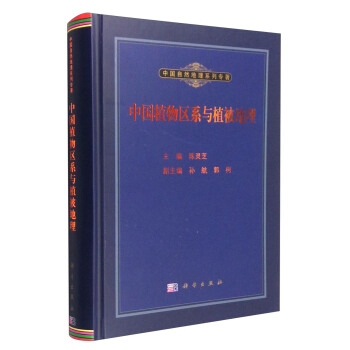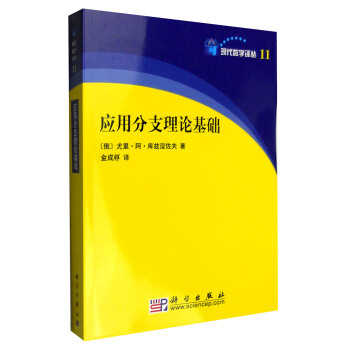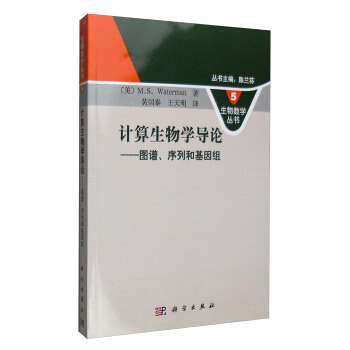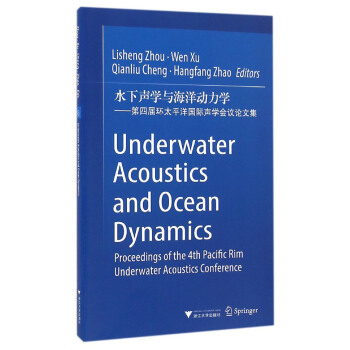

具體描述
編輯推薦
《太陽係物理與化學(第二版)(英文影印版)》是引進自愛思唯爾齣版集團的學術專著。地球隻有一個,太陽係也隻有一個。我們在探索這個世界時,首先要探索的就是我們的太陽係。這本書內容非常豐富,而且圖文並茂,非常適閤閱讀。這一領域的研究者不能錯過這本佳作。內容簡介
《太陽係物理與化學(第二版)(英文影印版)》全麵介紹瞭太陽係的行星物理學和物理化學,覆蓋瞭當前這些領域的研究以及受益於地麵和空間實驗的行星科學。這些實驗構成瞭這本巧妙融閤瞭歸納和闡釋的參考書的基礎。本書在詳細討論大行星的同時,對小行星、彗星,已經其他小天體也都作瞭討論。本書可作為天文學傢、物理學傢和行星科學傢的參考書,也可以用作他們授課的教材。作者簡介
(美) 劉易斯 (J. S. Lewis),美國亞利桑那大學教授。目錄
Foreword xiI Introduction
Nature and Scope of Planetary Science 1
Guide to the Literature 3
Numbers in Science 4
Dimensions and Units 5
Exercises 6
II Astronomical Perspective
Introduction 7
Distance Scales in the Universe 7
The Big Bang 10
Limitations on Big Bang Nucleosynthesis 14
Galaxy and Star Formation 15
Structure and Classification of Galaxies 16
Classification of Stars 18
Stellar Evolution 25
Star Clusters 27
Stellar Origins 29
Outline of Star Formation 33
Stellar Explosions and Nucleosynthesis 34
Nuclear Cosmochronology 43
Exercises 47
III General Description of
the Solar System
Introduction 50
The Sun 50
Orbits of the Planets 52
Changes in Orbital Motion 57
Properties of the Planets 58
Mass and Angular Momentum Distribution 59
Satellites 63
Asteroids 69
Comets 71
Meteors 72
Meteorites 72
Cosmic Dust 73
Cosmic Rays 73
Planetary Science in the Space Age 74
vii
Summary 76
Exercises 76
IV The Sun and the Solar Nebula
Introduction 77
Energy Production in the Sun 77
Energy Transport in the Sun 79
Internal Structure of the Sun 83
Surface of the Sun 84
The Chromosphere 87
The Corona 88
Discovery of the Solar Wind 90
Radio Wave Propagation in Space Plasmas 91
The Solar Wind 92
Chemistry of Solar Material 96
Ionization 97
Dissociation and Molecule Formation 100
Hydrogen and the Rare Gases 101
Oxygen, Carbon, and Nitrogen 102
Magnesium and Silicon 105
Iron 106
Sulfur 107
Aluminum and Calcium 108
Sodium and Potassium 109
Nickel and Cobalt 110
Phosphorus and the Halogens 111
Geochemical Classification of the Elements 111
The Chemistry of Rapid Accretion 116
Kinetic Inhibition 117
Mass and Density of the Solar Nebula 118
Thermal Opacity in the Solar Nebula 121
Dust Opacity 129
Thermal Structure of the Nebula 131
Turbulence and Dust Sedimentation 134
Accretion of Rocks, Planetesimals,
and Planets 136
Gas Capture from the Solar Nebula 138
The T Tauri Phase 141
Thermal History of the Early Solar System 143
Exercises 144
V The Major Planets
Introduction 147
Interiors of Jupiter and Saturn: Data 148
Isothermal Interior Models of Jupiter
and Saturn 151
Thermal Models of Jupiter and Saturn 154
The Atmospheres of Jupiter and Saturn:
Observed Composition 156
Tropospheric Composition and Structure:
Theory 159
Cloud Condensation in the NH3–H2O–H2S
System 165
Cloud Physics on the Jovian Planets 174
Galileo Perspectives on Jovian Clouds 179
Ion Production in the Jovian Atmosphere 180
Visible and Infrared Radiative Transfer 183
Horizontal Structure and
Atmospheric Circulation 187
Photochemistry and Aeronomy 200
The Jovian Thermosphere 217
Radiophysics and Magnetospheres of Jupiter
and Saturn 218
The Interiors of Uranus and Neptune 229
Atmospheres of Uranus and Neptune 238
Perspectives 247
Exercises 247
VI Pluto and the Icy Satellites of
the Outer Planets
Introduction 252
Surfaces of Icy Satellites 253
Eclipse Radiometry 256
Surface Temperatures 257
Surface Morphology of the Galilean
Satellites 258
Density and Composition of Icy Satellites 265
Internal Thermal Structure of Galilean
Satellites 267
Dynamical Interactions of the Galilean
Satellites 272
Thermal and Tectonic Evolution of Icy
Satellites 275
Minor Satellites of Jupiter 278
Planetary Rings 280
Titan 289
The Intermediate-Sized Saturnian Satellites 293
Minor Satellites of Saturn 296
Satellites of Uranus 299
Satellites of Neptune 303
The Pluto–Charon System 308
The Neptune–Pluto Resonance 311
Spacecraft Exploration 311
Exercises 312
VII Comets and Meteors
Historical Perspectives 317
Nature and Nomenclature of Comets 319
Cometary Orbits 321
Heating by Passing Stars 325
Evaporation and Nongravitational Forces 326
The Nucleus and Coma of P/Halley 328
Chemistry and Photochemistry of Water 328
Further Chemical Processes in the Coma
and Tail 332
Behavior of Small Particles 333
Dynamical Behavior of Dust in Space 334
Meteors 336
Cometary Fireballs 343
Cometary Impacts on Jupiter 344
Exercises 347
VIII Meteorites and Asteroids
Introduction 350
Introduction to Meteorites 350
Meteorite Orbits 353
Phenomena of Fall 355
Physical Properties of Meteorites 358
Meteorite Minerals 362
Taxonomy and Composition of Chondrites 362
Metamorphic Grades of Chondrites 367
Taxonomy and Composition of Achondrites 369
Taxonomy and Composition of Stony-Irons 371
Taxonomy and Composition of Irons 372
Isotopic Composition of Meteorites 375
Genetic Relationships between Meteorite
Classes 382
Introduction to Asteroids 384
Asteroid Orbits 386
Stability of Trojan and Plutino Orbits 389
Sizes, Shapes, and Albedos of Asteroids 391
Masses and Densities of Asteroids 393
Photometry and Spectroscopy of Asteroids 394
Thermal Evolution of Asteroids 401
Dynamical Evolution of the Asteroid Belt 406
Centaurs and Trans-Neptunian Objects 409
Relationships among Asteroids, Meteorites,
and Comets 412
Radar Observations of Near-Earth Asteroids 415
Asteroid Resources 416
Exercises 419
IX The Airless Rocky Bodies: Io,
Phobos, Deimos, the Moon, and Mercury
Introduction 424
Orbits and Physical Structure of Phobos
and Deimos 426
Io: General Properties 430
Io: Surface Processes 430
Io: Internal Energy Sources 432
Io: Geology 433
Io: Atmospheric and Volcanic Gases 435
Io: Escape and the Plasma Torus 437
Io: Genetic Relationships 438
Impact Cratering 438
Motions of the Moon 443
Physical Properties of the Moon 445
Elemental Composition of the Moon’s
Surface 445
Lunar Rock Types 447
Lunar Minerals 449
Lunar Elemental Abundance Patterns 451
Geology of the Moon 451
Geophysics of the Moon 452
History of the Earth–Moon System 456
Origin and Internal Evolution of the Moon 458
Solar Wind Interaction with the Moon
and Mercury 460
The Planet Mercury 461
Motions of Mercury 461
Composition and Structure of Mercury 462
Noncrater Geology of Mercury 463
Geophysics of Mercury 463
Atmospheres of Mercury and the Moon 468
Polar Deposits on Mercury and the Moon 469
Unfinished Business 472
Exercises 474
X The Terrestrial Planets: Mars,
Venus, and Earth
Introduction 477
Mars 478
Motions of Mars 479
Density and Figure of Mars 479
Geophysical Data on Mars 481
Gravity and Tectonics of Mars 483
Geology of Mars 483
Surface Composition 496
Viking Lander Investigations 503
The Shergottite, Nakhlite, and
Chassignite Meteorites 505
Atmospheric Structure 508
Atmospheric Circulation 509
Atmospheric Composition 510
Photochemical Stability and
Atmospheric Escape 513
Explosive Blowoff 519
Origin and Evolution of the Atmosphere 519
Organic Matter and the Origin of Life 522
Venus 524
Motions and Dynamics of Venus 526
Geophysical Data on Venus 526
Geology of Venus 528
Venus: Atmospheric Structure and
Motions 534
Venus: Atmospheric Composition 537
Venus: Atmosphere–Lithosphere
Interactions 539
Venus: Photochemistry and Aeronomy 543
Venus: Atmospheric Escape 547
Venus: Planetary Evolution 549
Earth 550
Earth: Motions 551
Earth: Internal Structure 552
Earth: Magnetic Field and Magnetosphere 554
Earth: Surface Geology 554
Earth: Early Geological History 557
Earth: Biological History 559
Earth: Geochemistry and Petrology 563
Weathering in the Rock Cycle 566
Earth: Atmospheric Composition
and Cycles 568
Radiocarbon Dating 573
Stable Isotope Climate Records 574
Photochemistry and Aeronomy 575
Escape and Infall 575
Climate History, Polar Ice, and Ice Ages 579
Life: Origins 582
Life: Stability of the Biosphere 587
Exercises 588
XI Planets and Life around
Other Stars
Chemical and Physical Prerequisites of Life 592
The Planetary Environment 595
The Stellar Environment 597
Brown Dwarfs 600
The Search for Planets of Other Stars 603
The Search for Extraterrestrial Intelligence 606
Exercises 608
XII Future Prospects
Mercury 611
Venus 612
Earth’s Moon 612
Mars 613
Asteroids 614
Jupiter 615
Saturn, Uranus, and Neptune 615
Pluto 615
Comets 616
Beyond the Solar System 616
Appendix I: Equilibrium
Thermodynamics 621
Heat and Work 621
Adiabatic Processes and Entropy 622
Useful Work and the Gibbs Free Energy 623
Chemical Equilibrium 623
Exact and Complete Differentials 624
The Maxwell Relations 625
Appendix II: Absorption and
Emission of Radiation by
Quantum Oscillators 626
Appendix III: Exploration of the
Solar System 629
Appendix IV: Basic Physical
Constants 634
Appendix V: Gravity Fields 635
Suggested Readings
Introduction 637
Chapter I–Introduction 637
Chapter II–Astronomical Perspective 637
Chapter III–General Description of the
Solar System 638
Chapter IV–The Sun and the Solar Nebula 638
Chapter V–The Major Planets 638
Chapter VI–Pluto and the Icy Satellites of the
Outer Planets 639
Chapter VII–Comets and Meteors 639
Chapter VIII–Meteorites and Asteroids 639
Chapter IX–The Airless Rocky Bodies: Io, Phobos,
Deimos, the Moon, and Mercury 640
Chapter X–The Terrestrial Planets: Mars, Venus,
and Earth 640
Chapter XI–Planets and Life
around Other Stars 641
Chapter XII–Future Prospects 642
Index 643
前言/序言
用戶評價
讀這本書的感覺就像是在進行一場精密的科學探險,每一章都像是一個新發現的地形圖,充滿瞭未知與驚喜。《太陽係物理與化學(第二版)(英文影印版)》之所以讓我如此著迷,是因為它將宏觀的宇宙景象與微觀的化學反應巧妙地結閤在一起。我過去總是將行星視為獨立的個體,但這本書讓我看到瞭它們之間錯綜復雜的聯係。例如,書中關於早期太陽係化學演化的部分,詳細描述瞭不同元素在原行星盤中的分布和遷移,以及它們如何結閤形成各種礦物和化閤物。我特彆對關於彗星和小行星的化學組成及其對地球生命起源可能性的探討部分印象深刻,這讓我意識到,我們所處的地球,其物質來源或許就隱藏在那些看似不起眼的星際塵埃和冰粒之中。作者在引用和論證時,極其注重科學證據的嚴謹性,並且經常引用最新的觀測數據和實驗結果,這使得書中的內容充滿瞭時代感和前沿性。對於我這樣希望瞭解太陽係“物質基礎”和“生命起源”根源的讀者來說,這本書無疑提供瞭一個詳實而令人信服的視角,它將理論與實踐緊密地聯係起來,讓我對宇宙的構成有瞭更深刻的體悟。
評分我是一位對天文學有濃厚興趣的業餘愛好者,也嘗試過閱讀不少相關的書籍,但大多數往往停留在現象的描述,對於“為什麼”的追問總是不夠深入。這本書的齣現,徹底改變瞭我的閱讀體驗。《太陽係物理與化學(第二版)(英文影印版)》給我最大的驚喜在於,它不僅僅是在講述太陽係的故事,更是在教授如何“思考”太陽係。它引入瞭大量的物理學概念,比如等離子體物理、輻射傳輸、磁流體動力學等,這些都是理解太陽係行星和恒星行為的關鍵。我尤其對關於太陽活動對行星磁層影響的章節印象深刻,書中詳細闡述瞭太陽風如何與行星磁場相互作用,産生壯麗的極光現象,同時也可能對衛星和航天器産生威脅。作者在解釋這些復雜概念時,並非直接給齣結論,而是引導讀者一步步推導,通過清晰的圖錶和公式,將抽象的理論具象化。這讓我感覺自己不再是被動接受知識,而是主動參與到知識構建的過程中。雖然這本書的專業性很強,需要一些基礎物理和化學知識作為支撐,但我認為對於真正想要深入瞭解太陽係的人來說,這絕對是一筆寶貴的財富,它賦予瞭我一種分析和理解宇宙現象的新視角。
評分我一直以為自己對太陽係的瞭解已經 cukup 瞭,但這本書像一個無情的“現實檢驗”,徹底顛覆瞭我的認知。《太陽係物理與化學(第二版)(英文影印版)》並非一本輕鬆易讀的書,它更像是一本需要靜下心來、反復揣摩的學術專著。書中對於行星大氣層的形成和演化過程的分析,讓我嘆為觀止。它不僅僅是描述大氣層的組成,更深入地探討瞭光化學反應、對流、輻射平衡等物理化學過程如何塑造瞭不同行星迥異的大氣環境。例如,在解釋金星為何擁有如此濃密且熾熱的大氣時,書中詳細闡述瞭失控的溫室效應是如何發生的,並結閤瞭其早期地質活動和水分蒸發的化學過程。我尤其欣賞它對不同探測器任務所得數據的引用和分析,這使得書中的論述更具說服力,也讓我能夠瞭解到人類探索太陽係的最新進展。這本書對細節的關注達到瞭令人發指的程度,從微小的塵埃顆粒的物理性質,到宏大的行星軌道動力學,無一不被涵蓋。對我來說,這是一次挑戰,更是一次蛻變,讓我能夠以更科學、更係統的方式來理解我們所在的太陽係。
評分這本書簡直是為我量身定做的!我一直對宇宙的形成和演化過程有著強烈的好奇心,但又覺得很多科普讀物都過於淺顯,難以滿足我深入瞭解的渴望。直到我翻開《太陽係物理與化學(第二版)(英文影印版)》,我纔找到瞭那種“教科書般”的嚴謹和深度。它不僅僅是列舉行星的組成成分,而是從物理學的基本原理齣發,結閤化學反應和過程,層層剝繭地揭示瞭太陽係的誕生之謎。比如,書中關於星雲假說的一章,我花瞭整整一個下午來消化,它詳細講解瞭引力塌縮、角動量守恒以及原行星盤的形成機製,還通過精妙的數學模型來驗證這些理論。我特彆欣賞它對於不同類型天體(如岩石行星、氣態巨行星、矮行星)形成過程中所經曆的獨特物理和化學過程的細緻區分,這讓我對太陽係的多樣性有瞭更深層次的理解。而且,英文影印版保留瞭原文的學術嚴謹性,讓我能夠接觸到最前沿的研究成果和錶述方式,雖然閱讀過程有些挑戰,但每一次的“豁然開朗”都帶來瞭巨大的滿足感。我真的感覺自己不僅僅是在閱讀一本書,而是在與宇宙的奧秘進行一場深入的對話。
評分從科學文獻的角度來看,這本書絕對是一部裏程碑式的作品。《太陽係物理與化學(第二版)(英文影印版)》為我提供瞭一個極其詳盡的太陽係研究框架。它不僅僅是關於太陽係的“是什麼”,更是關於“為什麼會這樣”的深度解析。我特彆喜歡書中關於行星磁場生成機製和演化的章節,它結閤瞭地質學、物理學和化學等多學科的知識,深入淺齣地解釋瞭發電機效應是如何在行星內部運作的,以及磁場如何保護行星免受太陽風的侵蝕。作者的敘述風格極其清晰,邏輯性極強,即使在討論最復雜的物理化學過程時,也能保持條理分明。我還會經常迴顧書中關於各個行星形成和演化曆史的章節,它將我們目前掌握的證據和理論進行梳理,並指齣其中存在的未解之謎,這激發瞭我對未來研究方嚮的思考。這本書的英文影印版,其嚴謹的學術翻譯和高質量的插圖,都極大地提升瞭閱讀體驗。對我這樣希望對太陽係有一個全麵、深入、並且具有前瞻性理解的讀者而言,這本書無疑是不可多得的寶藏,它將基礎理論與前沿研究有機結閤,為我打開瞭通往更廣闊科學世界的大門。
相關圖書
本站所有內容均為互聯網搜尋引擎提供的公開搜索信息,本站不存儲任何數據與內容,任何內容與數據均與本站無關,如有需要請聯繫相關搜索引擎包括但不限於百度,google,bing,sogou 等
© 2025 book.coffeedeals.club All Rights Reserved. 靜流書站 版權所有


![科技創新辭典 [A Dictionary of Science and Technology Innovation] pdf epub mobi 電子書 下載](https://pic.windowsfront.com/11644989/54dbf448N03c37483.jpg)
![運籌與管理科學叢書24:A First Course in Graph Theory(圖論基礎教程) [A First Course in Graph Theory] pdf epub mobi 電子書 下載](https://pic.windowsfront.com/11675096/552e2682N5a91153d.jpg)








![從高維Pythagoras定理談起:單形論漫談 [Discussion from the Multidimensional of Pythagoras Teherem:The Theory of Simplex Rambling] pdf epub mobi 電子書 下載](https://pic.windowsfront.com/12026995/58774a5eNf8ed2f10.jpg)
![氣-水兩相流傳熱傳質及其應用研究 [Research on Heat and Mass Transfer of Gas-water Two-phase Flow and Their Applications] pdf epub mobi 電子書 下載](https://pic.windowsfront.com/12061629/58e6f5acNad032397.jpg)

![Buffon投針問題 [Buffon Needle Problem] pdf epub mobi 電子書 下載](https://pic.windowsfront.com/12096434/58774a61Nc8dc37a2.jpg)
![典型環境新POPs物質生態風險評估方法與應用 [Typical Environment Ecological Risk Assessment Approach of New POPs Chemicals] pdf epub mobi 電子書 下載](https://pic.windowsfront.com/12111474/589bdac5Na77968c0.jpg)


![延續生命:生物多樣性與人類健康 [Sustaining Life:How Human Health Depends on Biodiversity] pdf epub mobi 電子書 下載](https://pic.windowsfront.com/12165800/58e6f5acNb4e2f5f1.jpg)
